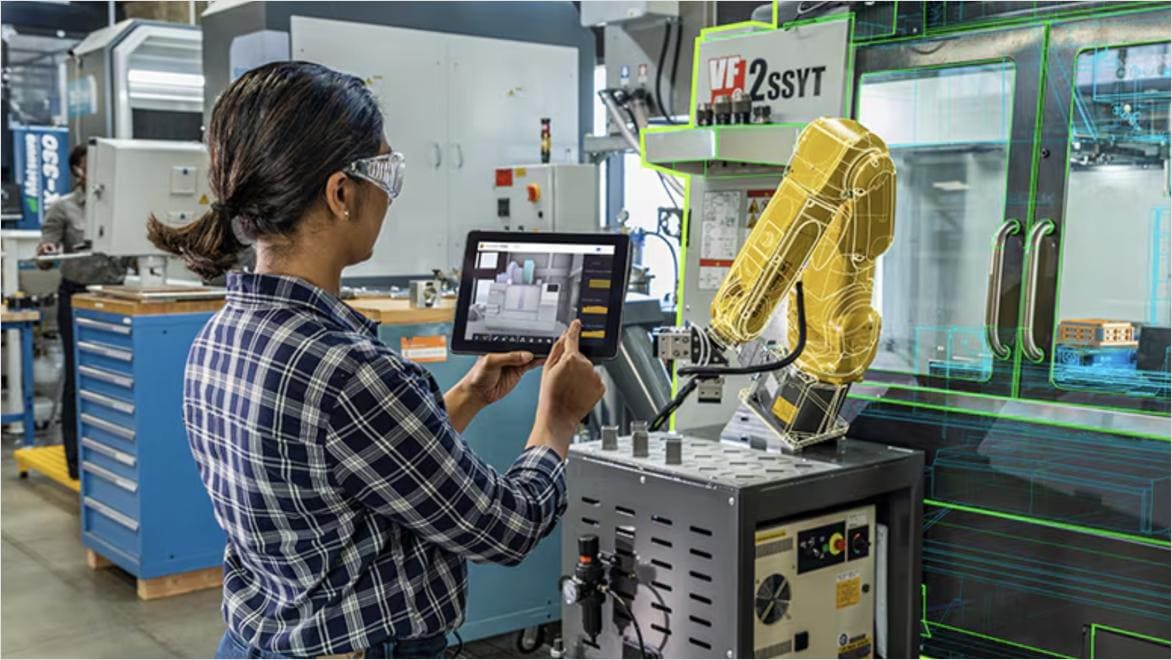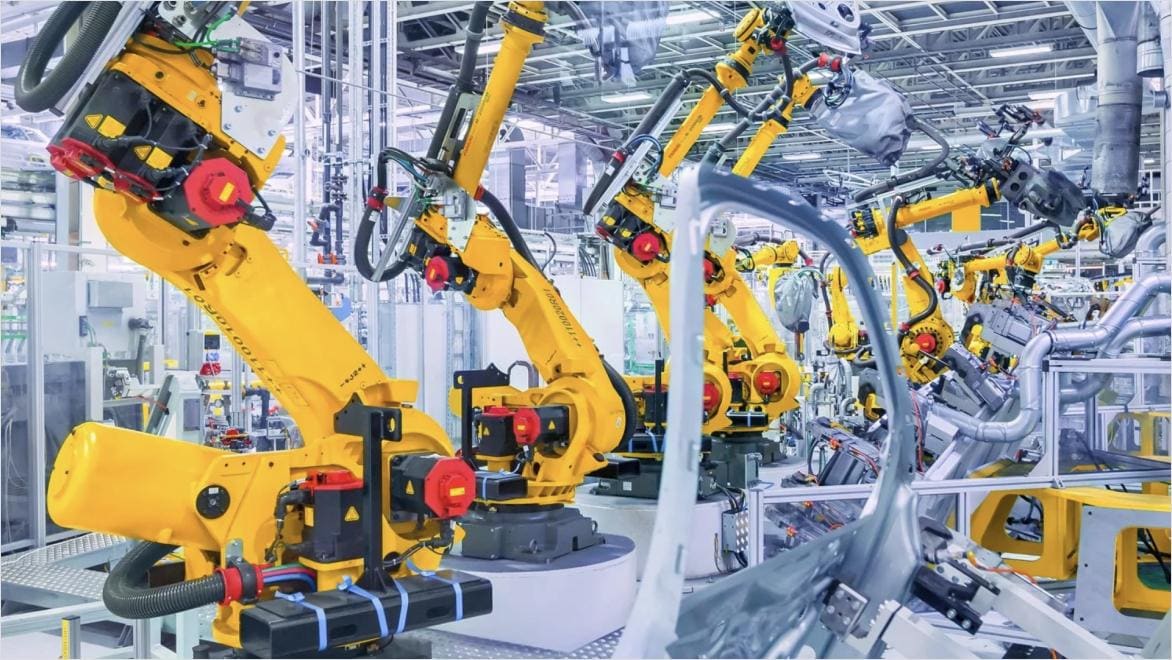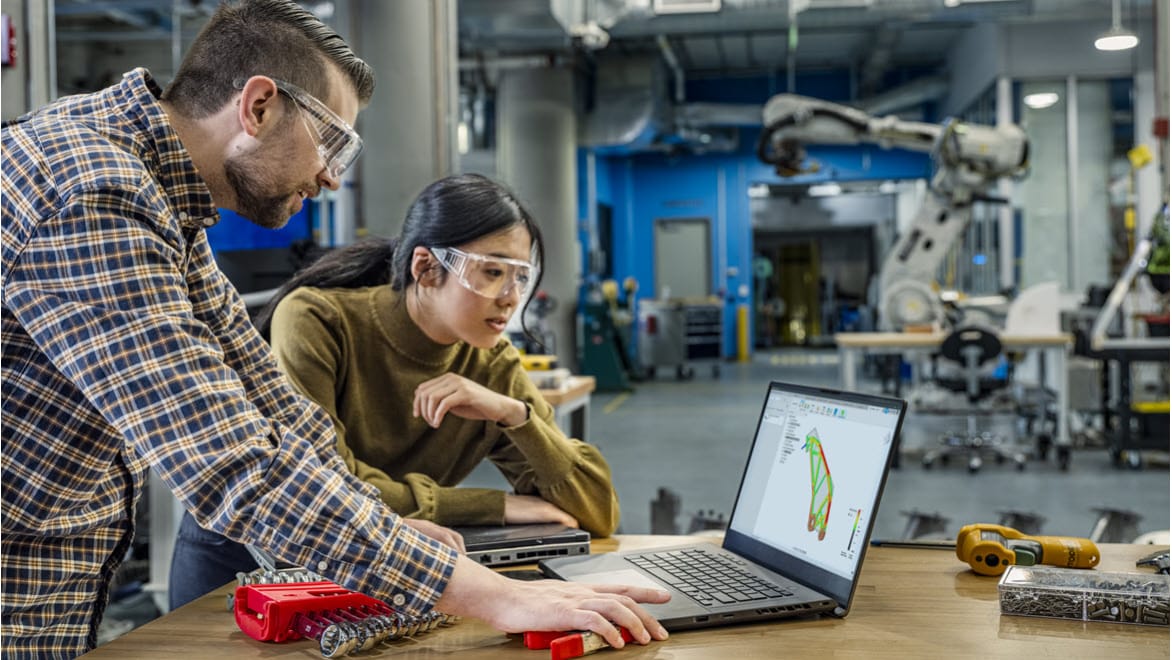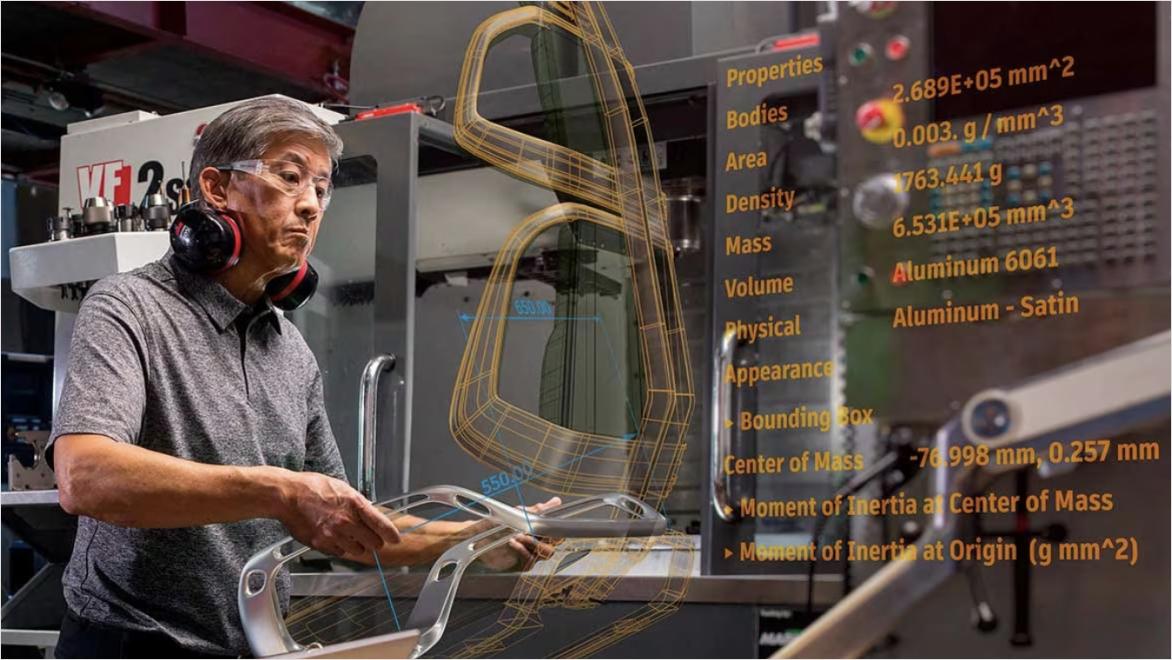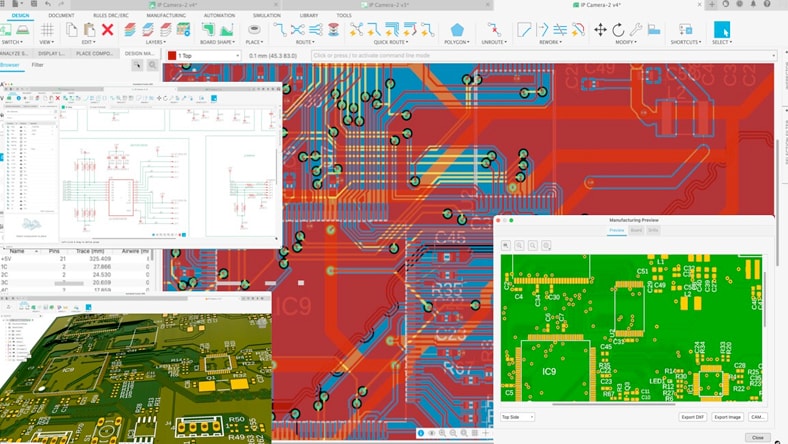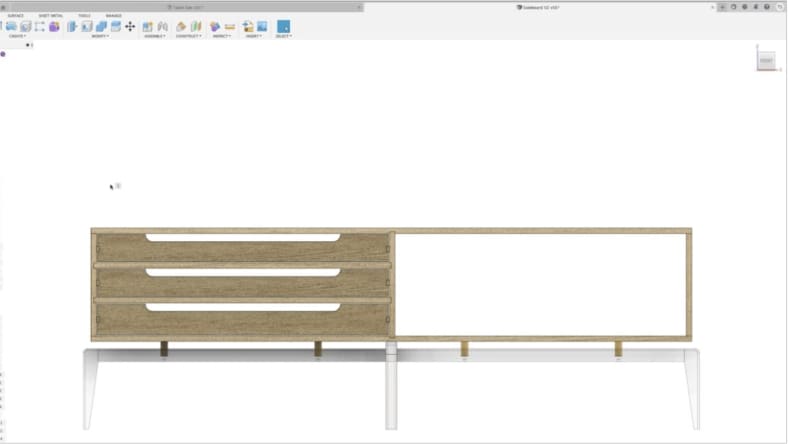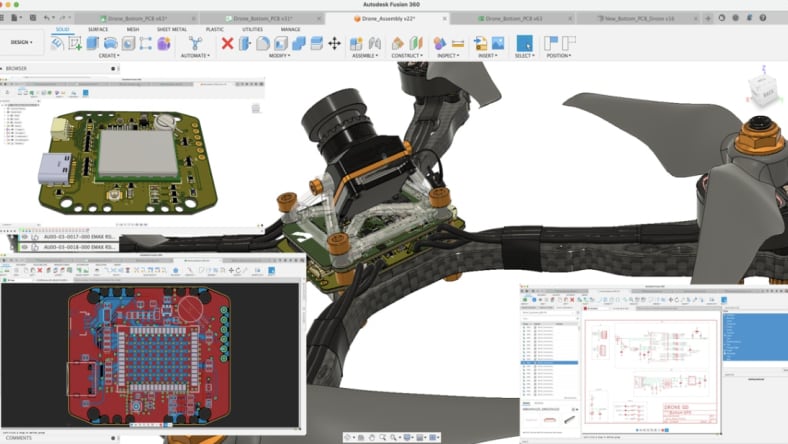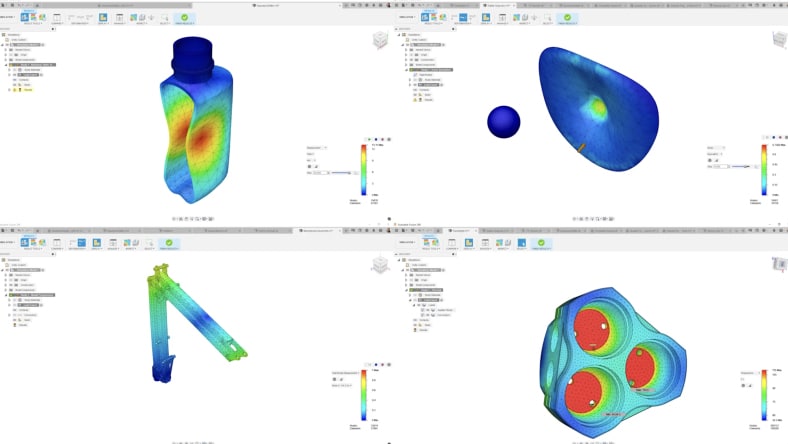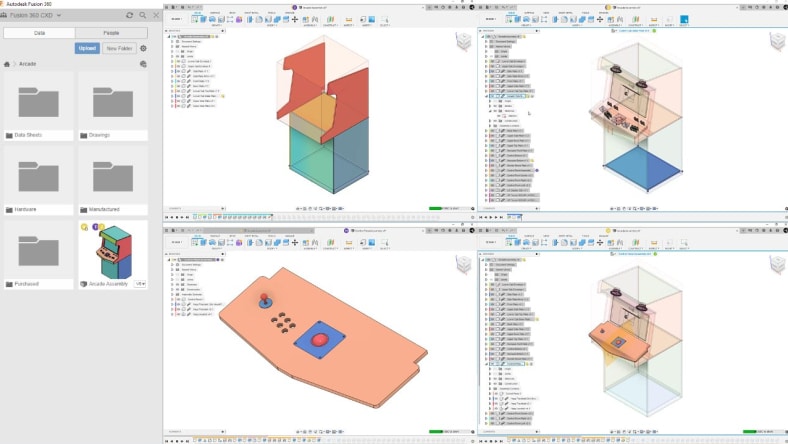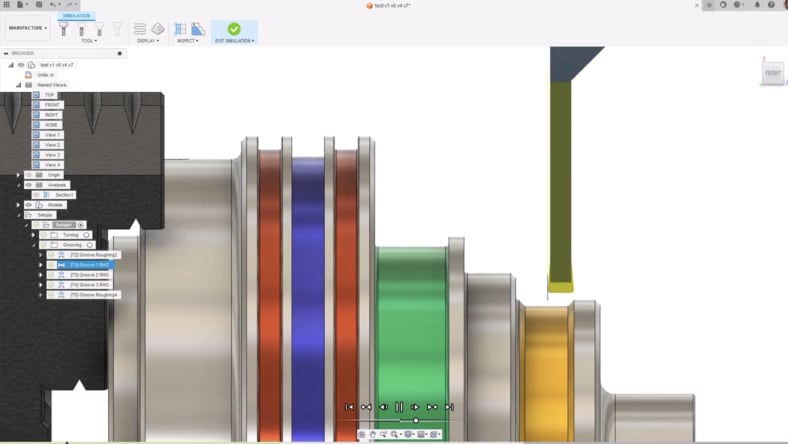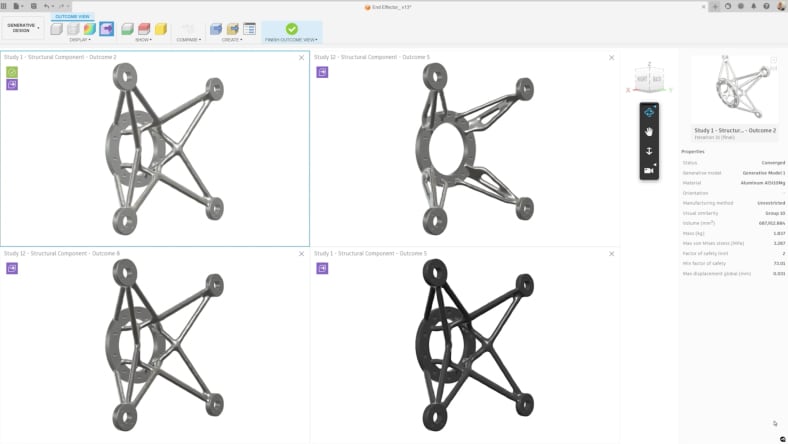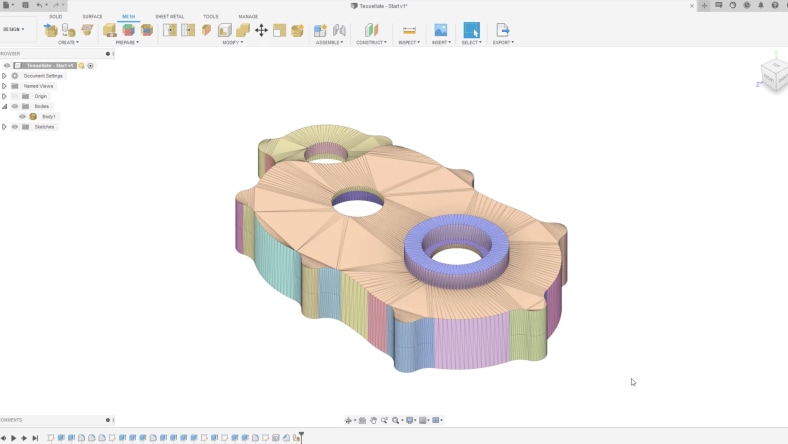& Construction

Integrated BIM tools, including Revit, AutoCAD, and Civil 3D
& Manufacturing

Professional CAD/CAM tools built on Inventor and AutoCAD
& Entertainment

Entertainment content creation tools, including 3ds Max and Maya
Mechatronics, also called mechatronics engineering is a multidisciplinary field that merges mechanical engineering, electrical engineering, computer science and control engineering to design and develop innovative, intelligent systems. At its core, mechatronics combines these diverse engineering disciplines to create advanced systems capable of sensing, actuating and controlling processes with exceptional precision and efficiency. These systems encompass a wide range, from everyday household appliances to complex industrial robots and advanced medical devices.
The significance of mechatronics lies in its capacity to boost the functionality, performance and reliability of products and systems. By harnessing the strengths of mechanical engineering, electronics, computer science and control engineering, mechatronics engineering facilitates the development of smarter, more adaptable and efficient technologies that cater to the needs of today’s dynamic industries. This interdisciplinary approach fosters innovation and paves the way for cutting-edge solutions that greatly enhance quality of life and industrial productivity.
Mechatronics engineers design, develop and maintain smart machines and systems by integrating mechanical, electrical and control engineering principles. They create and test prototypes to ensure seamless system integration, develop automation solutions, troubleshoot issues and manage projects through completion. They also engage in research and development to innovate and improve technologies, collaborate with interdisciplinary teams and produce detailed documentation for their systems.
Mechatronics blends core components to create advanced systems, showcasing its functionality and applications.
These are the core of mechatronic systems, including motors, gears and actuators that perform physical actions and translate control signals into movement or force.
Electronics control and power mechanical systems with sensors for measurements, actuators for commands and circuits for signal processing and communication.
These regulate mechatronic devices using algorithms and feedback to ensure smooth operation of mechanical and electronic components. They include both hardware (microcontrollers, PLCs) and software (control algorithms).
Computers manage complex calculations, programming and simulation (US Site) of mechatronic systems, including PCs, embedded systems and specialised hardware.
Sensors collect environmental data and actuators use this data to make changes. Examples include cameras and temperature sensors for sensing and motors and solenoids for actions.
Software is crucial for designing and controlling mechatronic systems, from embedded code to high-level applications for system management and customisation.
Mechatronics engineering focuses on the integration of mechanical engineering, electrical engineering and software engineering while offering these benefits:
Mechatronics enhances precision in manufacturing and control processes by integrating advanced sensors and actuators, resulting in more accurate and reliable operations.
Combining mechanical and electronic systems improves overall efficiency, leading to reduced energy consumption and faster production cycles.
Mechatronics systems offer greater flexibility in design and function, allowing for easy adaptation to new tasks and changes in production requirements.
By integrating control systems with mechanical and electronic components, mechatronics enables higher levels of automation, reducing the need for manual intervention and increasing productivity.
Mechatronic systems find applications in various industries and engineering processes. Some common examples include:
Mechatronics is crucial in the automotive sector, improving safety and performance. Examples include anti-lock braking systems (ABS) that prevent wheel lockup during braking and electronic stability control (ESC) that enhances vehicle stability in challenging conditions.
In robotics, mechatronics enables the development of both industrial and service robots. Industrial robots automate manufacturing processes with high precision, while service robots assist in tasks ranging from customer service to healthcare support.
Mechatronics enhances consumer electronics by integrating smart technology into everyday devices. Examples include smart home devices like thermostats and appliances that offer advanced features and connectivity for improved user experience.
In healthcare, mechatronics contributes to advanced medical devices such as surgical robots that assist surgeons with high precision and diagnostic equipment that provides accurate and reliable results for patient care.
The aerospace industry benefits from mechatronics through technologies like unmanned aerial vehicles (UAVs) and sophisticated flight control systems that ensure stable and efficient aircraft operation, contributing to both commercial and defence applications.
Mechatronics enhances manufacturing and production with automation solutions such as precision CNC machines and automated assembly lines, improving production speed, consistency and quality.
Autodesk Fusion plays a pivotal role in mechatronics engineering by offering an integrated platform for designing, simulating and manufacturing complex systems. It enables seamless collaboration between mechanical, electrical and software disciplines, facilitating precise parametric modelling, advanced simulations and efficient production, driving innovation and optimisation in mechatronic system development.
Optimise part design and performance with unlimited cloud solves for generative design, FEA, electronic cooling, injection moulding and more.
These are some top mechatronics engineering features in Autodesk Fusion.
Fusion provides a unified workspace for mechanical, electrical and software design, enhancing collaboration and streamlining the mechatronics development process.
In Fusion, parametric modelling allows engineers to define relationships between components, enabling automatic updates and precise adjustments in mechatronic systems.
Fusion’s EDA tools facilitate the design and simulation of electronic circuits and PCB layouts, crucial for integrating electronics in mechatronic systems.
Fusion’s simulation capabilities, including FEA and CFD, help analyse mechanical and thermal performance of mechatronic systems under various conditions, ensuring robust designs.
Fusion’s real-time collaboration features enable teams to work together on mechatronic projects, sharing updates, feedback and revisions efficiently across disciplines.
Fusion integrates with manufacturing processes such as 3D printing and CNC machining, translating mechatronic designs into physical components with high precision.
Fusion’s generative design tools use algorithms to explore optimal design solutions for mechatronic systems, balancing performance, weight and material usage.
Fusion’s tessellation and mesh tools convert complex 3D models into editable meshes, essential for detailed analysis and simulation in mechatronics applications.
Explore mechatronics engineering, an interdisciplinary field combining mechanical, electrical and control engineering to develop intelligent systems.
Discover how Fusion simplifies mechatronics by integrating mechanical, electrical and software design. Elevate your projects with cutting-edge tools for seamless, optimised performance.
Unlock the power of mechatronics with Fusion’s Simulation tools. Seamlessly validate, optimise and perfect your designs for precision and performance using advanced simulation capabilities.
Unlock the future of automotive part manufacturing with mechatronics! Learn how Fusion’s integrated CAD, CAM and CAE tools streamline design, testing and production processes for maximum efficiency.
Fusion’s simulations optimise mechatronic systems by testing mechanical, thermal and structural performance in a virtual environment.
Signal integrity is key in mechatronics for reliable communication between components. The Fusion Signal Integrity Extension, enables electromagnetic analysis of critical PCB signals, ensuring seamless performance.
The term “mechatronics” was coined in 1969 by Tetsuro Mori at Yaskawa Electric Corporation, initially referring to the integration of mechanical and electronic systems in industrial machinery. In the 1970s, the concept gained traction in Japan, improving manufacturing equipment and consumer electronics, driven by advancements in microprocessors and microcontrollers.
The rapid advancements in computer technology and control systems during this decade allowed for more sophisticated and precise control of mechanical systems. Robotics emerged as a key application of mechatronics, with significant progress in industrial automation and the development of robotic arms and automated assembly lines.
With the integration of advanced sensors, actuators and real-time computing, the field continued to expand. Mechatronics began to be applied in a wider range of industries, including automotive, aerospace and healthcare. The introduction of CAD (Computer-Aided Design) and CAM (Computer-Aided Manufacturing) technologies changed the design and manufacturing processes, further blurring the lines between mechanical and electronic systems.
The growth of the internet and advancements in communication technologies led to the rise of the Internet of Things (IoT), where mechatronic systems could be connected and controlled remotely. This era also saw the development of more complex and autonomous systems, such as drones, advanced robotics and smart home devices.
Mechatronics has evolved with artificial intelligence (AI) and machine learning, creating smarter, adaptive systems. It now includes applications like autonomous vehicles, medical robots, smart factories and wearable technology. AI and data analytics have further enhanced system efficiency and responsiveness.
Mechatronics (US Site) enhances modern engineering by enabling the development of sophisticated systems that are more precise, efficient and versatile. It improves automation and control in various applications, from manufacturing to consumer electronics. By combining mechanical and electronic systems, mechatronics facilitates the creation of intelligent products with advanced capabilities and adaptability.
Autodesk Fusion is a powerful tool in mechatronics, providing integrated solutions for 3D design, simulation and manufacturing. It allows engineers to model mechanical components, simulate their behaviour and analyse how they interact with electronic systems. Fusion’s capabilities streamline the design process, optimise performance and ensure that mechatronic systems function effectively.
Fusion’s parametric modelling (US Site) allows engineers to define relationships and constraints between design elements, which is crucial for mechatronic systems. It enables iterative design adjustments and ensures coherence throughout the development process. For instance, in a robotic arm design, parametric modelling helps adjust joint angles and link lengths to optimise performance while maintaining structural integrity.
Autodesk Fusion offers several simulation features (US Site) beneficial for mechatronics, including:
These tools help engineers validate designs, optimise performance and ensure reliability in mechatronic systems.
Fusion supports the integration of electronic components through its PCB (Printed Circuit Board) design capabilities and electrical simulation tools. Engineers can design and simulate electronic circuits alongside mechanical components, ensuring seamless integration. This capability is crucial for developing systems where electronic and mechanical parts must work together harmoniously.
Mechatronics engineers have a wide range of career opportunities in various industries, including:
Mechatronics engineers can also work in research and development, designing and developing new technologies and products. They can also work in academia, teaching and conducting research in mechatronics and related fields. The diverse skill set of mechatronics engineers opens up numerous career paths, allowing them to contribute to a wide range of industries and technological advancements.
Autodesk Fusion aids in the development of robotic systems by providing tools for precise 3D modelling, motion simulation and mechanical analysis. Engineers can design robotic arms, joints and actuators and simulate their movements and interactions. Fusion’s parametric modelling allows for easy adjustments and optimisation of robotic components to achieve desired performance and functionality.
Autodesk Fusion enhances collaboration through its cloud-based platform (US Site), which allows multiple users to work on the same project simultaneously. Features such as real-time data sharing, version control and collaborative review tools enable teams to communicate effectively, share feedback and make design changes collaboratively, streamlining the development process.
Control engineering is a critical component of mechatronics that involves the design and development of control systems that regulate mechatronic devices. Control engineers use a variety of techniques, including feedback control, feedforward control and model predictive control, to design control systems that ensure smooth operation of mechanical and electronic components. By implementing these control strategies, engineers can achieve precise regulation of system behaviour, optimise performance and enhance the reliability of mechatronic devices. Control engineering is essential for applications ranging from industrial automation to autonomous vehicles, where accurate and responsive control is paramount.
